Have you decided to launch a clothing business online? Or maybe, you still have some doubts? In any of these cases, keep reading this post about online clothing stores to get valuable insights!
The fashion e-commerce industry is set to experience exponential growth in the next few years. In 2023, experts predict that global retail e-commerce sales for apparel and footwear are expected to exceed $6 billion. This means that the opportunities for fashion e-commerce businesses will be vast, with a potential for huge profits. You can read more about fashion e-commerce trends in our blog.

Zalando is the most valuable fashion e-commerce business in the world, valued at over $6.7 billion USD. In a report produced in June of 2022, the Berlin-based company topped the charts. Its market capitalization was almost 7 million dollars last year.
Zalando was followed by VIP Shop with a market cap of over 6 million dollars in 2022. The Hut Group and ASOS follow these companies.
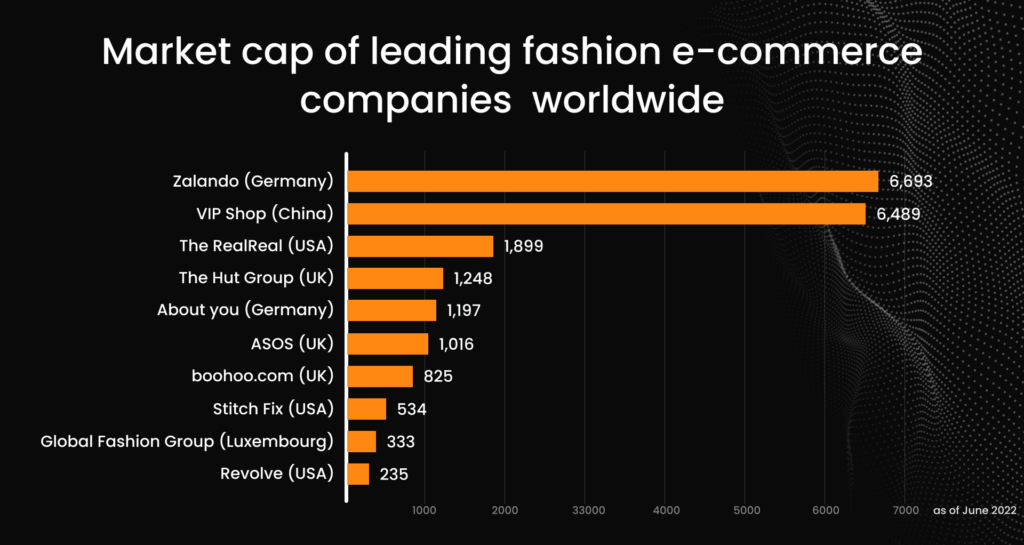
In the US only, Shein.com made almost 6 billion dollar net in 2021, while Macys.com reached 5.6 billion in the same year.
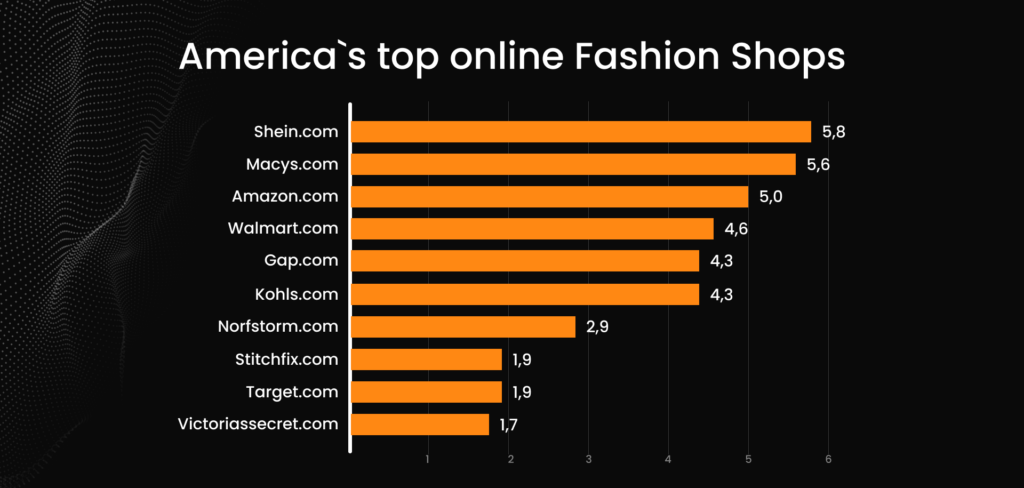
With the numbers like that, you can see that e-fashion market is extremely rewarding. Thus, you may be thinking about opening an online clothing store. But you must know that you will not only benefit from the opportunities in this industry but will also face some challenges.
McKinsey assessed the biggest difficulties and opportunities for fashion retail brands in 2023. Check them on the infographics below.
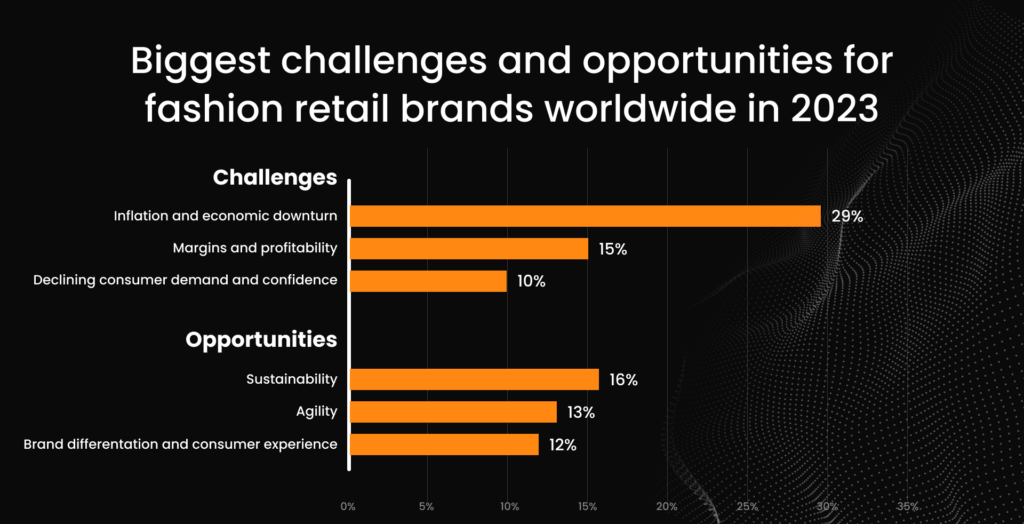
Still not sure about starting your clothing eCommerce business? Then check the reasons to do that below.
Why Starting a Clothing Store Online Is a Good Idea
In times of an unstable economy, entrepreneurs have a lot of doubts about launching a business. And no wonder why! But no matter how reasonable your worries are, you should take a risk. Below, we are explaining the advantages of starting an online clothing business.
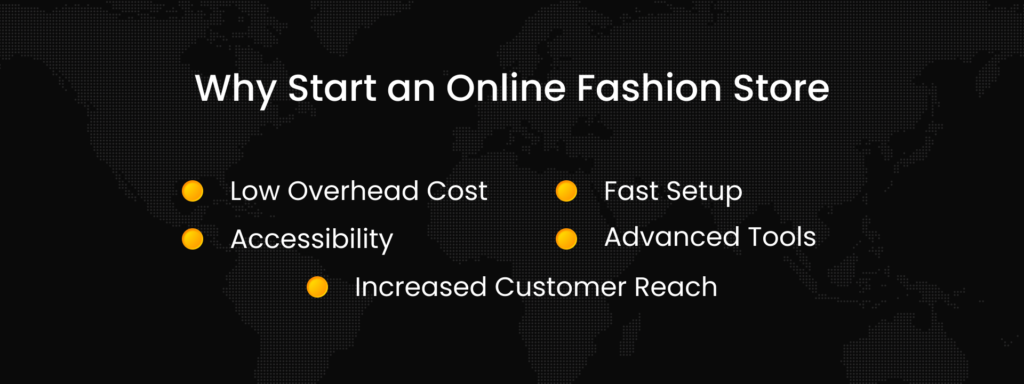
1. Low Overhead Cost
If you want to know how to open a clothing store online, you must know about overhead costs. Starting an online clothing store in 2023 promises to significantly lower the overhead costs compared to opening a physical retail store. You can operate your business from home, hire remote staff, and use digital marketing tools for advertising instead of renting physical space and hiring in-store personnel. This will make it much easier to get started without having to invest too much upfront capital.
2. Accessibility
With an eCommerce website, you don’t need to worry about location constraints. Your customers can shop from anywhere with an internet connection – they don’t need to be physically present at your store or even within driving distance! This provides great opportunities for entrepreneurs looking to tap into global markets beyond their local area.
3. Fast Setup
Setting up an online store is much faster than setting up a physical shop. You don’t need to find and secure premises, hire staff and a lot of consultants on how to open an online clothing store or wait for construction to be completed. You can get started immediately! Your digital storefront will be operational within days, which allows you to quickly get your products in front of customers.
Do you want to launch your online store in no time?
Leave us your contact details and we will help with that!
4. Advanced Tools
There are powerful eCommerce tools available today that make managing an online store easier than ever before. You can use software solutions for product management, inventory tracking, customer segmentation, and marketing automation — things that would take months or years to set up in a physical store.
5. Increased Customer Reach
With the ubiquity of internet connectivity, it’s now easier than ever to build a global customer base. You can target customers from different countries, age groups and interests in ways that weren’t possible before. This gives you the potential for enormous growth opportunities that wouldn’t be available with a physical shop.
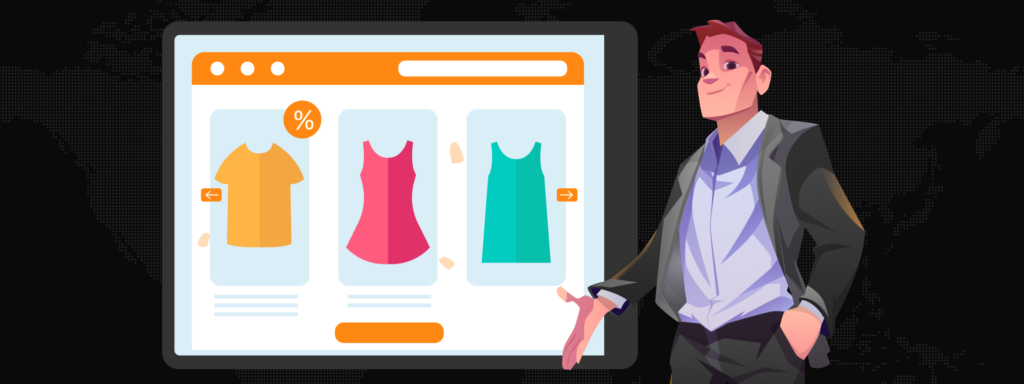
So there are many great reasons to start an online clothing boutique in 2023. The low overhead costs, accessibility, fast setup time and advanced tools make it easier than ever to launch a successful eCommerce business. Additionally, the increased reach of digital channels provides ample opportunity for entrepreneurs looking to scale their brands globally. All of these benefits make taking the leap into online retail worth considering!
How to Start an Online Clothing Business from Home
It is possible to launch an online clothes store without coding with the help of Shopware. Shopware is a cloud-based eCommerce platform that makes launching and managing an online clothing store easy and stress-free. It has all the features you need for your store, including inventory management, payment processing, customer support tools, and more. If you need help with it, don’t worry — go to our Dedicated eCommerce Development Team: IT Delight page to get some assistance.
Need help with launching a clothing store?
Our expert team will get back to you if you leave your contacts.
You don’t have to be tech-savvy to use it — Shopware is designed with user-friendly interfaces so anyone can get started quickly. Plus, its scalability allows you to grow your business at your own pace without any major changes or investments. In addition, there are lots of Shopware plugins that could make your life easier. So if you want to launch an online clothes store without coding.
Getting Help with Clothing Online Business
Launching an online clothes store is no small task. It requires a lot of research, planning, and development – all of which require specialized knowledge that professional agencies can provide. By leveraging their expertise and experience, it will help ensure that you have the right platform in place to effectively reach your target audience and build a successful business.
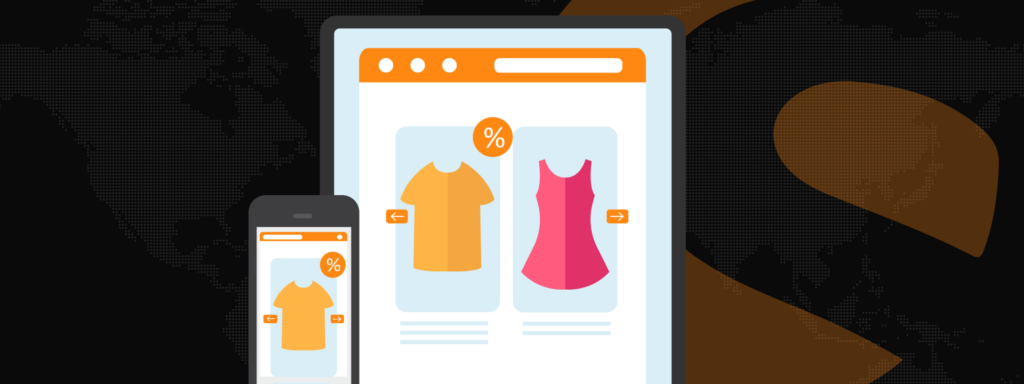
Shopware is one of the most popular e-commerce platforms around and provides a wealth of features to get your online shop up and running quickly. Professional agencies like IT Delight can help you understand how Shopware works and advise on what type of website design would best suit your goals. They can also offer assistance with setting up product categories, payment gateways, shipping options and more to create a comprehensive shopping experience for customers.
Having a professional agency on board can also help you get the most out of Shopware’s extensive marketing features. This includes email campaigns, analytics and social media integration that can help take your business to the next level.
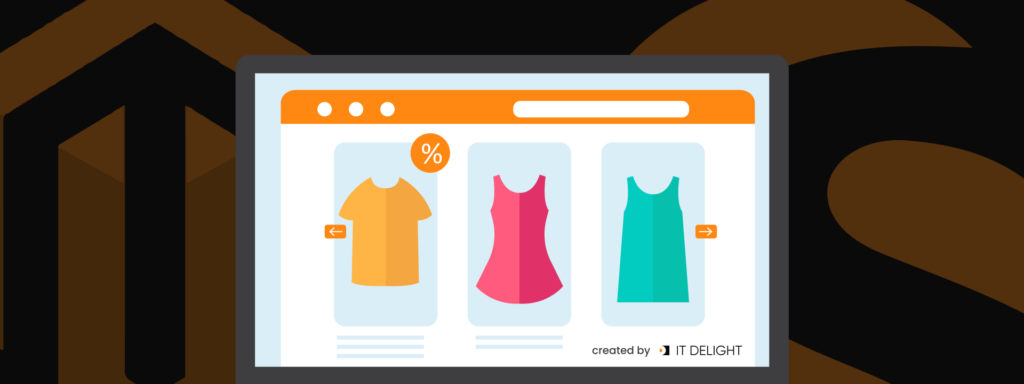
How to Start Selling Clothing Online: a Step-by-Step Guide
Before you you become a fashion eCommerce entrepreneur, you should make a thorough plan. With our step-by-step guide on how to start a business online for clothing, you will learn about all the stages
1. Know Your Target Market

Before you choose a clothing niche, it’s essential to understand who your target customers are. Consider their age range, gender identity, location, lifestyle, interests and values. You should also research popular trends in that market and how they interact with fashion. This way you can create an effective marketing strategy tailored to their needs.
Tools for Market Research
There are lots of approaches to do market research described in books like “Starting an Online Clothing Store for Dummies”. But to save your time, we’ve made a list of the best tools helping to study your market. Check them below.
- Google Trends
A great tool to see what people are searching for and how popular certain search terms are, Google Trends can be an invaluable resource when researching target markets. With this tool, you can observe changes in search volume over time and compare different terms to get a better understanding of interests within your target market.
- Social Media Platforms
Whether it’s Twitter, Instagram, or Facebook, social media platforms offer a wealth of information about consumer interests. From analyzing hashtags to seeing which products and services customers talk about the most on these platforms, there is plenty of data that can help you identify trends with your target audience and craft more effective marketing campaigns.
- Surveys
Creating surveys can be a great way to get in-depth feedback from target customers. With surveys, you can ask questions about their buying habits, preferences, and interests which can help you create more tailored campaigns that better appeal to your target market.

- Analytics Tools
Analytics tools such as Google Analytics or Adobe Analytics are designed to provide valuable insights into customer behavior on websites. With analytics tools, you can see where visitors are coming from, what pages they’re visiting the most, and how long they’re staying on your website — all of which can give an indication of customer interest levels in certain products or services and help inform future marketing strategies.
- Market Segmentation
Market segmentation is the process of dividing a large market into smaller, more distinct groups of customers. By understanding the different types of customer segments and their needs, you can create marketing campaigns that are tailored to certain sectors of your target market and provide them with the right products or services they need.
Using market segmentation can help businesses contact more customers and possibly uncover new opportunities for growth.
Investopedia
- Focus Groups
Focus groups involve bringing together a small group of people in a controlled setting and asking them questions about products or services related to your business. Not only is this an effective way to understand how to target customers feel about certain offerings, but it also allows marketers to get direct feedback from potential buyers that they can use as guidance when creating new campaigns or product lines.
- Consumer Reports
Consumer reports are detailed analyses of various products and services offered by different companies. They provide comprehensive information about products, including ratings and reviews from other customers — this can be a great source of information if you’re trying to identify customer needs or preferences within your target market.
Taking the time to thoroughly research your target market is an essential part of creating successful e-commerce strategies. So make sure you take advantage of all these tools and know how to start selling clothes online in the existing market.
2. Find a Market Gap
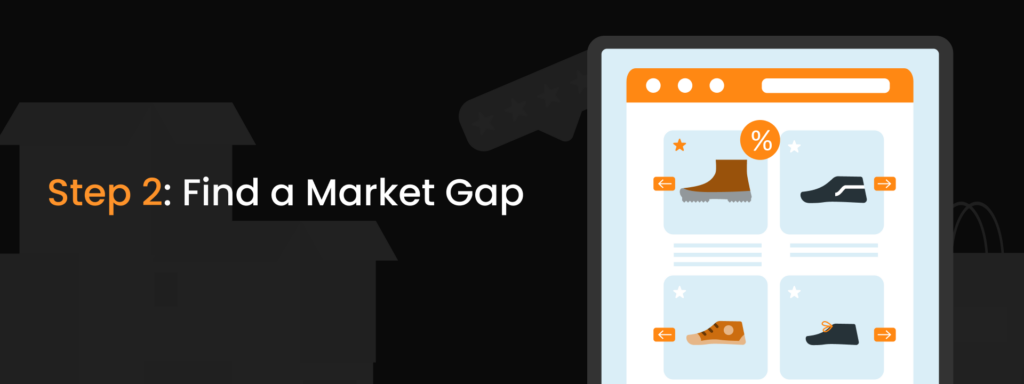
Once you understand your target market, it’s time to select your niche. Think carefully about the type of clothing you want to sell and what makes it unique. Consider whether there is a demand for the type of clothing you have in mind and if there is enough competition in the market already. Finding a gap in the market can help you stand out from other businesses.
Techniques to Find a Market Gap
Finding a market gap in e-commerce can be tricky, but with the right research and strategies, it’s possible to find an underserved niche or unmet need that your business can fill. Here are some techniques you can use:
- Identify Your Competitors
Start by researching other businesses that offer similar products or services in the same niche. Take note of their strengths and weaknesses so you can identify areas where you could do better.

- Analyze Customer Reviews
Use reviews from customers on competitor websites to uncover any complaints about service or product quality. Are there any gaps or challenges that these companies have not addressed?
- Monitor Social Media Activity
Pay attention to discussions happening on social media about competitor products and services. What do people wish these companies offered that they don’t?
- Research New Trends
Stay up to date on emerging trends in your niche and identify areas where there is an opportunity for innovation.
- Ask Your Target Market
Conduct surveys or interviews with your target audience to understand their needs, wants, and pain points related to the products or services you offer. This can help you uncover any unmet needs that could be met by introducing a new product or service.
3. Research Prices

Before settling on a final decision, do some research into pricing trends in your chosen niche. Analyze competitors’ prices and consider how much people are willing to pay for certain items. This will help you determine an appropriate price range for your products and ensure that they are competitive in the market.
Approaches to eCommerce Price Research
There are several approaches you can take. Let’s go over each one and see which makes the most sense for your situation.
- Market Basket Analysis
This approach looks at baskets of items (i.e., a group of items purchased together) to determine an average price for the entire bundle. This is done by looking at past purchases from customers and analyzing marketplace demand and supply data. By understanding what customers have bought together in the past, you can set prices that maximize profit while still being competitive within the industry.
- Price Optimization
This approach uses advanced analytics to identify pricing trends and optimize prices across different channels or marketplaces. The goal of this approach is to determine the most effective pricing strategies that maximize profits, while still being competitive with other e-commerce platforms.
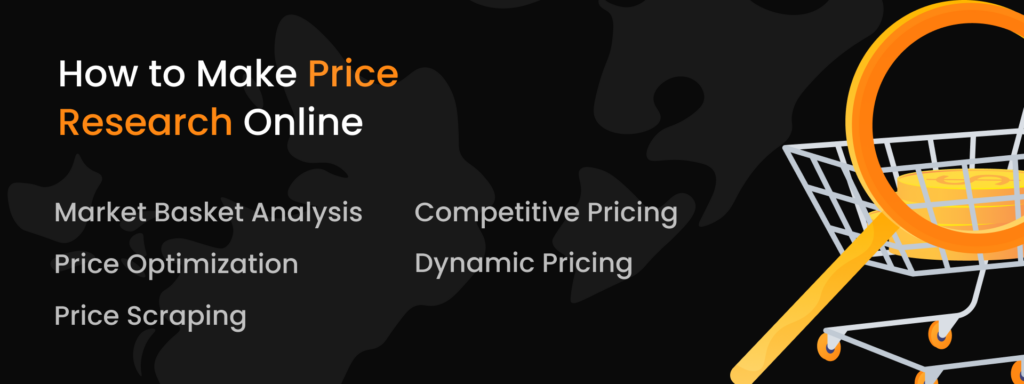
- Price Scraping
This approach uses software to pull prices from various sources and analyze them for trends or patterns. By understanding what customers are paying for items across different sites or marketplaces, you can make better decisions about your own prices.
- Competitive Pricing
This approach looks at the prices of similar products from competitors in order to set your own prices accordingly. It’s important to understand the competition in order to stay ahead and remain profitable.
- Dynamic Pricing
This approach automatically adjusts prices based on factors such as demand, supply, seasonality, and more. By utilizing algorithms to constantly adjust prices, you can maximize profits and remain competitive.
Each of these approaches has its own set of pros and cons, so it’s important to understand your situation and determine which approach makes the most sense for you. With the right research, you can make sure that your pricing strategy is profitable while still being competitive within the industry.
4. Consider Quality
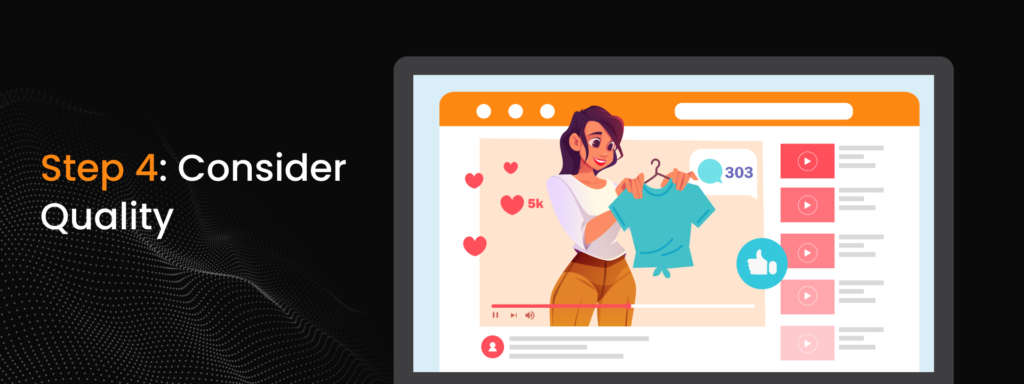
Quality is an important factor to consider when selecting a clothing niche for your online store. You want to provide customers with products that are comfortable, long-lasting and fashionable. Research materials used by competitors and select fabrics that meet industry standards in terms of durability and style.
Assessing Clothes Quality
One of the key factors in delivering quality clothes to your customers is understanding how to define quality. Quality can be determined by a variety of factors such as fabric, construction techniques, and care instructions.
- Fabric
Fabric is one of the most important aspects when it comes to assessing clothing quality. High-quality fabrics should have a smooth texture, even coloration and be durable enough to withstand normal wear and tear. Fabrics that are too thin or have an uneven texture may indicate lower-quality material. Carefully inspect each item before listing them online so you know which materials you are selling.

- Construction Techniques
The way clothing is constructed plays a big role in determining quality as well. Seams should be tight and straight with no visible fraying or pulling. Look for items with double-stitched seams, flat felled seams, and bartacks as these indicate better construction quality.
- Care Instructions
Caring for clothing is also critical to maintaining quality over the long-term. Make sure that all items you sell include care instructions so customers understand how to properly wash, iron and store their clothes without damaging them. Providing this useful information will help ensure customer satisfaction with your e-commerce business.
5. Think About Your Brand Image
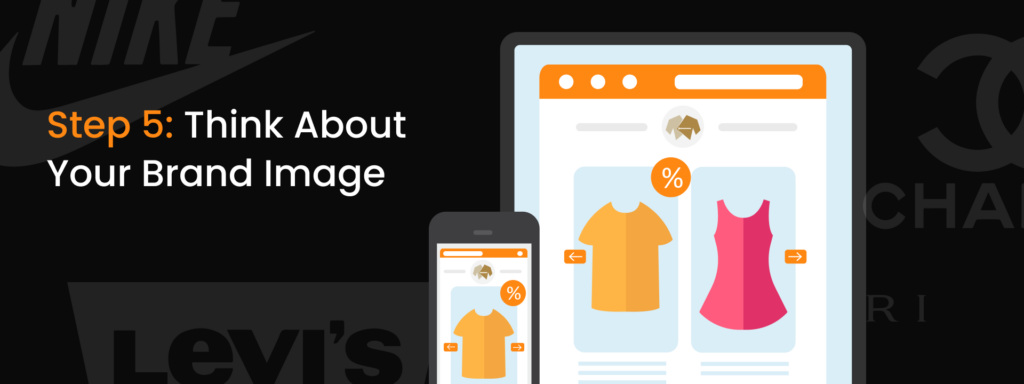
Your brand image should also be taken into account when choosing a clothing niche for your online store. Consider what type of look you want to create and how it aligns with your overall identity as a company. For example, if you’re targeting a younger demographic, it may be beneficial to focus on streetwear or edgy styles rather than classic designs. This will help you create an image that resonates with your target market.
Creating Your Brand Image
- Consider the overall look and feel of your online store: What colors do you want to use? What images and visuals do you want to include?
- Utilize branding materials like logos, taglines, slogans, etc. to help drive your clothing brand identity.
- Create a unique voice for your brand that speaks to who you are as a business and what values you stand for.
- Leverage social media platforms as an effective way to reach new customers and build relationships with existing ones. Share valuable content that resonates with them, such as outfit inspirations, discounts or promotions, styling tips, etc.
- Use influencer marketing campaigns to further expand your reach and create buzz about your brand.

- Use data and analytics to track user engagement and measure the effectiveness of your campaigns. This will help you refine your strategy and optimize results.
- Invest in search engine optimization (SEO) to ensure that customers can easily find your store when searching for relevant keywords or phrases (everything you need to know about SEO for your e-store).
Stay consistent with all of your branding materials and be mindful of how they are presented across different platforms. Make sure there is a cohesive aesthetic throughout them all! - Analyze customer feedback and make adjustments accordingly. This will help you improve their experience as well as boost loyalty towards your brand.
- Don’t forget to focus on customer service: prioritize responding quickly, provide helpful solutions, and make customer experience a priority. By doing so, you’ll build trust with customers and show that you care about them!
By considering these factors, you can find the perfect clothing niche for your online store and start selling stylish and affordable pieces. Keep in mind that your niche may evolve over time as trends change, so make sure to stay up to date on what’s popular in the industry. Once you have a clear understanding of who you want to target and what type of clothes they’re looking for, it will be much easier to build a successful online business.
Trends in Online Clothing Business 2023
Creating an online clothing store is doomed for failure if you don’t know anything about current trends. If you want your business to be successful, check them below!
Customization
One of the biggest trends in online clothing businesses this year is customization. Consumers want to tailor their shopping experience and create pieces that are unique to them, whether it be through personalizing a garment with monogramming or choosing specific fabrics, colors, and styles.
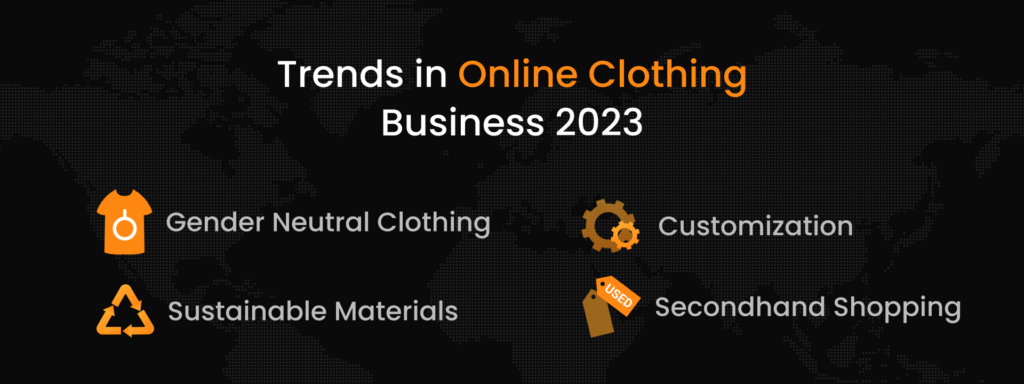
Sustainable Materials
Another trend that is growing in popularity amongst fashion consumers is the use of sustainable materials such as organic cotton, hemp, Tencel, etc. This allows shoppers to get garments that are not only stylish but also much better for the environment than traditional materials like polyester or nylon.
Secondhand Shopping
Thrifting has become increasingly popular among fashion lovers who want to look good without breaking the bank or contributing to the fast fashion cycle. Many online clothing businesses are offering vintage or secondhand pieces for shoppers to choose from, giving them access to unique one-of-a-kind items that can’t be found anywhere else.
According to a recent report by ThredUp, the U.S. secondhand fashion market is expected to more than triple in value in the next 10 years – from US$28 billion in 2019 to US$80 billion in 2029.
Forbes
Gender Neutral Clothing
More and more companies are focusing on gender neutral clothing, particularly in kids’ fashion. This allows parents to shop without having to worry about figure out whether an item is meant for boys or girls, and it also gives children the freedom to express their own unique style without feeling like they have to conform to societal expectations of gender roles and presentation.
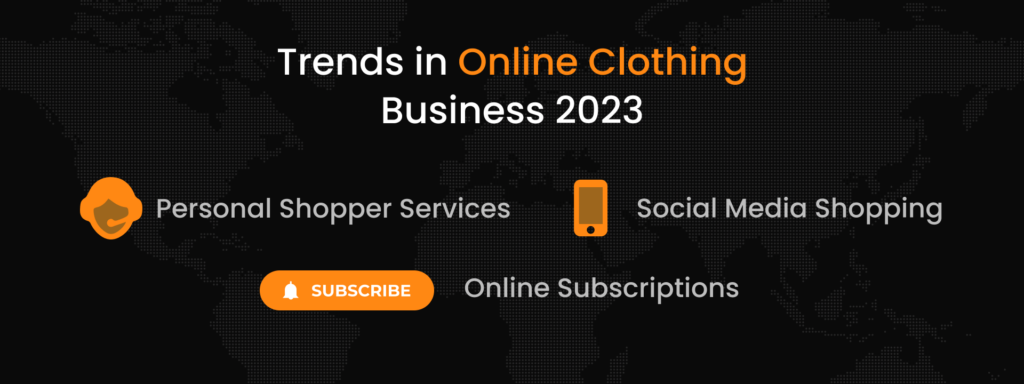
Personal Shopper Services
Online shopping can be overwhelming due to the sheer amount of options available, so many businesses are now offering personal shopping services. This gives shoppers the opportunity to have a professional consultant who can help them find exactly what they need and provide helpful styling tips along the way.
Social Media Shopping
With social media’s popularity, it only makes sense that more and more businesses are catering to this by offering shopping experiences right on the platform. From Instagram shops to Pinterest boutiques, shoppers no longer have to leave their favorite app in order to make purchases and it allows for much more personalization than ever before.
Social commerce is a $1.2 trillion opportunity and the next global shopping revolution
Forbes
Online Subscriptions
Online clothing subscriptions are becoming increasingly popular as well, with companies like StitchFix leading the way. These services allow you to sign up for a subscription where you’ll receive items tailored to your taste and lifestyle, eliminating the need to go searching through online stores on a regular basis.
By leveraging these trends in the right way, online clothing businesses can ensure that they meet customer needs and remain competitive in their industry for years to come. With the right mix of style, sustainability, convenience, and personalization, they can create a shopping experience that is truly unique.
The Most Common Pitfalls to Avoid
When it comes to launching an online clothing store, many entrepreneurs get caught up in all the excitement and forget about the potential pitfalls that can arise. To make sure your launch is as successful as possible, here are some of the most common issues you should be aware of if you are wondering how to start an online clothing store:
Pricing Too High
Setting prices too high can quickly turn away potential customers and reduce sales. Be sure to research competitors and the prices they’re offering and make sure your pricing is competitive.
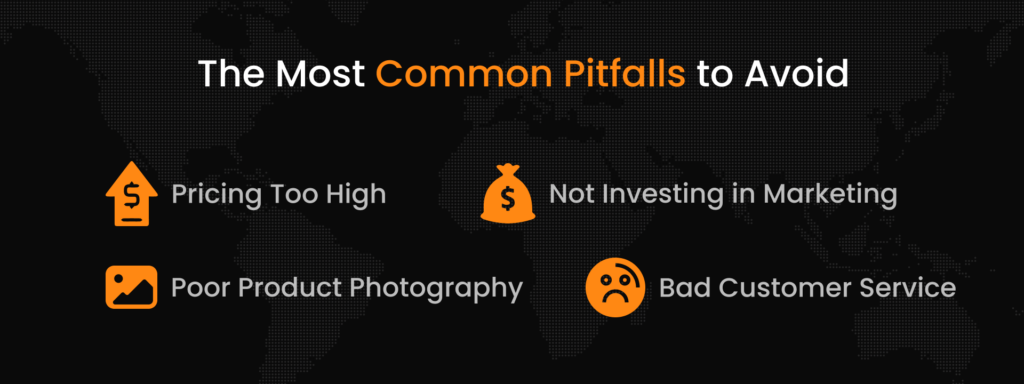
Not Investing in Marketing
It’s important to invest in some form of marketing to let potential customers know that you exist, such as running paid ads or using social media influencers. Without any marketing efforts, it will be difficult to drive traffic to your store.
Poor Product Photography
Customers can’t physically touch and feel items when shopping online, so good product photography is essential for showcasing clothing items accurately and persuasively. Investing in professional photography will go a long way toward making sales.
Bad Customer Service
Just knowing how to start a clothing company online is not enough. Customers often have questions or issues before making a purchase, so having a customer service team in place to respond quickly and efficiently is key. Not responding to customers promptly can lead to a negative experience and decrease the chances of them making a purchase.
By being aware of these common pitfalls and taking steps to avoid them, you’ll be well on your way to launching a successful online clothing store. Good luck!
Final Thoughts on How to Start an Online Fashion Business
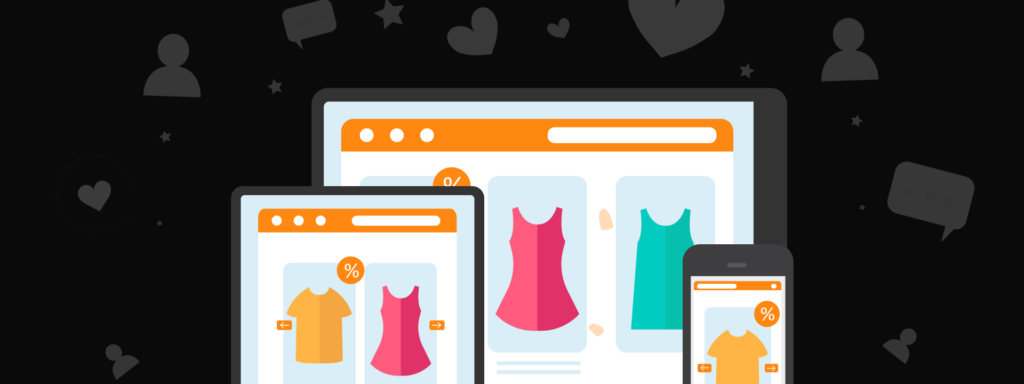
Overall, starting an online clothing store in 2023 is easier than ever before, especially if you are using our eCommerce marketplace development services. With the right tools and processes in place, you can be up and running in no time. From selecting a web platform to setting up payment options, there are lots of decisions to make when launching your new business.
With that said, now it’s time for you to plan your grand vision and start an online clothing business. Remember: with a little bit of hard work and dedication, anything is possible! If you need assistance from our company, check our About Us page now.
By following this step-by-step guide, you’ll have all the information you need to get started on the path to success. Good luck – we can’t wait to see what amazing things you create!
